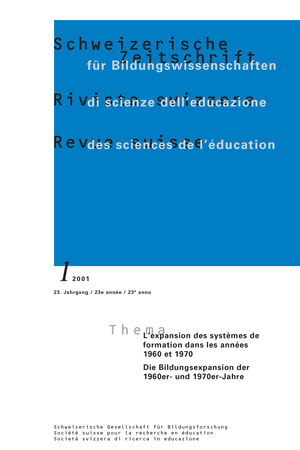The democratization of instruction in France since the Second World War
DOI:
https://doi.org/10.24452/sjer.23.1.4597Abstract
This article takes stock of the democratization of education in France. It reminds one of the origins of this policy in the first half of the nineteenth century and shows that the realization, that only followed in the years 1959-1963, is connected with the reform of secondary level I (école moyenne) and the first wave of growth. Following this, the paper analyzes the second wave of growth that fundamentally changed the shape of the gymnasium after the year of 1985. Finally, the question of the results of this process is raised: Did the respective policy reduce the social inequality towards school?
The answer must be variegated: The opening of continued schools (collège and lycée) has eased the access for children from modest circumstances and generally reduced inequalities. But below this commonality, the inequality between individual schools has developed in various ways: Until the mid-1960’s, the inequality diminished. After this process of democratization, it came to a halt, if not even hollowed out by the selective procedures introduced in 1973. The decisions of 1985, however, put the process of democratization back in gear. But the connected hopes, overall, were not fulfilled.
Downloads
Downloads
Published
Issue
Section
License

This work is licensed under a Creative Commons Attribution 4.0 International License.



